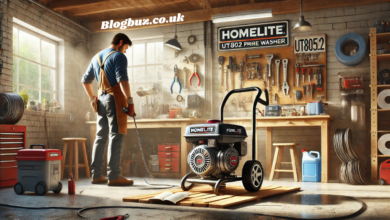What’s Causing That Roof Leak? 7 Surprising Sources You Might Overlook

Introduction
Roof leaks are one of the most frustrating home issues to face. You see a stain on the ceiling, maybe a drip during a storm, and your first instinct is to blame the shingles. But not all roof leaks come from where you’d expect.
In reality, the source of a leak is often hidden, indirect, or caused by systems other than your actual roofing surface. That’s why effective roof repairs require more than a visual once-over—they demand a full investigation.
Here are seven surprising sources of roof leaks you might be overlooking, and what they mean for your home.
1. Cracked or Missing Flashing
Flashing is the thin metal material installed around chimneys, vents, skylights, and roof edges to direct water away from seams. When it cracks, lifts, or corrodes, water begins to sneak underneath it—and eventually into your home.
Common signs:
- Water stains near chimneys or along wall junctions
- Rust streaks on exterior siding
- Debris collecting around roof penetrations
Because flashing is often tucked under shingles or roofing layers, it’s not immediately visible. Small flaws here can cause leaks that lead to premature roof repairs if not addressed promptly.
2. Clogged or Improperly Sloped Gutters
It might sound like a drainage issue, but blocked or failing gutters are one of the most common causes of roof edge leaks.
Here’s why:
- Overflowing water backs up beneath shingles
- Persistent moisture degrades the fascia and soffit
- Ice dams form more easily when drainage is blocked
If your gutters are sagging, leaking at the seams, or overflowing during rain, they may be causing more damage than you realize. Gutter replacements or re-pitching may be necessary to restore water flow and prevent roofline deterioration.
3. Attic Condensation or Poor Ventilation
You might not think of condensation as a source of water damage, but it’s one of the more subtle threats to your roof.
Here’s how it happens:
- Warm, moist indoor air rises and condenses on the cold underside of your roof deck
- This moisture accumulates over time, soaking insulation and wood structures
- Eventually, it mimics the signs of a leak—even though there’s no external breach
Attic issues often get misdiagnosed as roof failures. A well-trained roofing contractor will inspect the attic space, ventilation setup, and insulation balance to ensure moisture isn’t coming from within.
4. Chimney or Skylight Issues
Both chimneys and skylights are beautiful features—but they’re also two of the most common entry points for leaks.
Chimneys may leak due to:
- Cracked masonry or mortar joints
- Failing chimney caps
- Flashing separation
Skylights can leak from:
- Improper installation
- Sealant failure
- Thermal expansion around the frame
If you notice water near these features—even intermittently—it could point to a localized flashing or sealing failure that requires targeted roof repairs. The fix may not involve your shingles at all.
5. Damaged Roof Vents or Plumbing Boots
Roof vents allow air and gases to escape from your plumbing and HVAC systems. They often feature rubber or neoprene boots at their base to seal the opening.
Over time, these boots can crack, dry out, or shift, allowing water to enter around the vent pipe. Because these are relatively small features, the leaks they create are often misdiagnosed.
Tell-tale signs:
- Ceiling stains near bathrooms or laundry areas
- Visible cracking around roof vent collars
- Dripping during hard rain rather than snow melt
A minor component like this can trigger larger water issues if overlooked.
6. Improperly Installed Valleys
Valleys are the areas where two roof slopes meet, channeling water toward the gutters. Because they carry large volumes of water, valleys need to be properly sealed and layered with underlayment.
Problems occur when:
- Nails are placed too close to the valley center
- Shingles overlap incorrectly
- Debris builds up and slows water flow
Even new roofs can suffer leaks if valley installation is rushed or done without best practices. These issues can lead to premature roof replacements in otherwise healthy systems if not corrected.
7. Roof Age and Material Breakdown
Sometimes, a leak isn’t caused by one specific failure—it’s simply the result of wear and tear. Asphalt shingles begin to break down after 15–20 years, depending on weather exposure and maintenance history.
Signs of aging include:
- Curling or cracking shingles
- Granule loss (visible in gutters or downspouts)
- Exposed underlayment or nails
While minor repairs might delay the inevitable, widespread signs of material fatigue usually mean it’s time to consider full roof replacements. If your system is nearing the end of its expected lifespan, even small leaks can signal broader deterioration.
Don’t Assume—Inspect
Because leaks can stem from multiple areas—some not even on the roof surface—it’s crucial to take a whole-system approach when diagnosing moisture intrusion.
Here’s what a professional will likely inspect:
- Shingle condition
- Flashing integrity
- Gutter health and drainage
- Attic ventilation and insulation
- Roof penetrations (vents, pipes, skylights)
- Interior damage patterns
Companies like Class Roofing know that accurate repairs start with proper detection. Without it, patching the visible symptom won’t stop the root problem—and more leaks are likely to follow. If you’re dealing with leaks and need roof repair in Newark, professional assessment is the first step toward a lasting solution.
Final Thoughts
Not all roof leaks are created equal. Some are caused by aging materials, others by installation shortcuts or overlooked features like gutters and attic vents. The key is to stop treating every drip as a surface issue—and start looking at the full roofing system as a network of connected components.
If your roof is leaking and the source isn’t obvious, don’t assume the worst—or the simplest. A focused inspection can reveal hidden causes that, when addressed early, save you from larger problems down the line.
From discreet roof repairs to complete gutter replacements or even full roof replacements, proactive attention makes all the difference in keeping your home dry and protected year-round.




